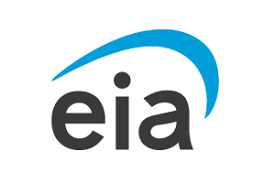· Brian Horton · Natural gas storage · 3 min read
U.S. Natural Gas Storage Increases by 95 Bcf as Summer Demand and LNG Exports Strengthen
U.S. natural gas storage rose by 95 Bcf for the week ending June 13, 2025, bringing total inventories to 2,802 Bcf. While smaller than recent builds, the injection still exceeded historical averages. With hotter-than-normal weather and recovering LNG exports driving demand, prices climbed to a three-month high. Supply and storage dynamics remain in focus as summer heat intensifies.

The U.S. Energy Information Administration (EIA) reported a net injection of 95 billion cubic feet (Bcf) of natural gas into underground storage for the week ending June 13, 2025. This brings total working gas inventories in the Lower 48 states to 2,802 Bcf. Although this marks the smallest weekly build since early April, the increase still exceeded both the five-year average and the same week in 2024, when injections totaled 72 Bcf.
Despite a recent streak of larger builds coming to an end, storage levels remain solid. Current inventories are 233 Bcf, or 7.7%, lower than this time last year. However, they are 162 Bcf, or 6.1%, above the five-year average of 2,640 Bcf. These figures keep total storage comfortably within the five-year historical range, offering some buffer as the U.S. heads into the peak of the summer cooling season.
Across major storage regions, the East and Midwest led the gains with weekly injections of 32 Bcf and 30 Bcf respectively. The Mountain and Pacific regions added smaller volumes, while the South Central region saw a 20 Bcf increase, driven by a 21 Bcf rise in non-salt facilities and a 1 Bcf decline in salt storage. Overall, the pace of injections since April has averaged more than 3 Bcf per day higher than both the five-year norm and last year’s rate.
Natural gas futures responded to the report and broader market fundamentals by climbing to $3.87 per million British thermal units (MMBtu), the highest level in nearly three months. Market sentiment has been supported by hotter-than-average temperature forecasts across much of the Lower 48 states, which are expected to extend into early July. Increased air conditioning demand is projected to raise natural gas consumption for power generation, putting upward pressure on prices and tightening supply.
In addition to weather-driven demand, U.S. liquefied natural gas (LNG) exports are also rebounding. Following recent maintenance outages at major export terminals including Cameron, Sabine Pass, and Corpus Christi, feedgas flows to LNG facilities are expected to rise in the coming weeks. So far in June, LNG feedgas demand has averaged 14.1 billion cubic feet per day (Bcf/d), slightly lower than the 15.0 Bcf/d average in May and April’s record 16.0 Bcf/d. However, as export operations normalize, demand is poised to strengthen.
On the supply side, domestic natural gas production has shown modest growth. Output in the Lower 48 has averaged 105.3 Bcf/d in June, with daily production reaching an eight-week high of 106.4 Bcf/d earlier this week. Although production remains below winter highs, the recent uptick indicates a potential recovery heading into the second half of the year.
Looking ahead, the combination of above-normal temperatures, rising LNG exports, and steady production levels will be key factors in determining the pace of storage injections through the rest of the summer. With inventories now well above seasonal averages but still trailing last year’s levels, natural gas markets are likely to remain sensitive to shifts in both weather patterns and global energy demand.
- EIA report
- natural gas storage
- summer energy demand